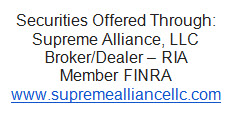Simplified Employee Pension (SEP) plans can provide a significant source of income at retirement by allowing employers to set aside money in retirement accounts for themselves and their employees. A SEP does not have the start-up and operating costs of a conventional retirement plan and allows for a contribution of up to 25 percent of each employee’s pay.
- Available to any size business
- Easily established by adopting Form 5305-SEP, a SEP prototype or an individually designed plan document
- If Form 5305-SEP is used, cannot have any other retirement plan (except another SEP)
- No filing requirement for the employer
- Only the employer contributes
- To traditional IRAs (SEP-IRAs) set up for each eligible employee
- Employee is always 100% vested in (or, has ownership of) all SEP-IRA money
How does a SEP work?
Jed works for the Rambling RV Company. Rambling RV decides to establish a SEP for its employees. Rambling RV has chosen a SEP because the RV industry is cyclical in nature, with good times and down times. In good years, Rambling RV can make larger contributions for its employees and in down times it can reduce the amount. Rambling RV’s contribution rate (whether large or small) must be uniform for all employees. The financial institution that Rambling RV has chosen for its SEP has several investment funds from which to choose. Jed decides to divide the contribution to his SEP-IRA among three of the available funds. Jed, an employee, cannot contribute because SEPs only permit employer contributions.
Pros and Cons:
- Easy to set up and operate
- Low administrative costs
- Flexible annual contributions – good plan if cash flow is an issue
- Employer must contribute equally for all eligible employees
Who Contributes: Employer contributions only
Contribution Limits: Total contributions to each employee’s SEP-IRA are limited.
Filing Requirements: An employer generally has no filing requirements.
Participant Loans: Not permitted. The assets may not be used as collateral.
In-Service Withdrawals: Yes, but includible in income and subject to a 10% additional tax if under age 59 1/2.
This information is not intended to be tax or legal advice, and it may not be relied on for the purpose of avoiding any federal tax penalties. You are encouraged to seek tax or legal advice from an independent professional advisor.


